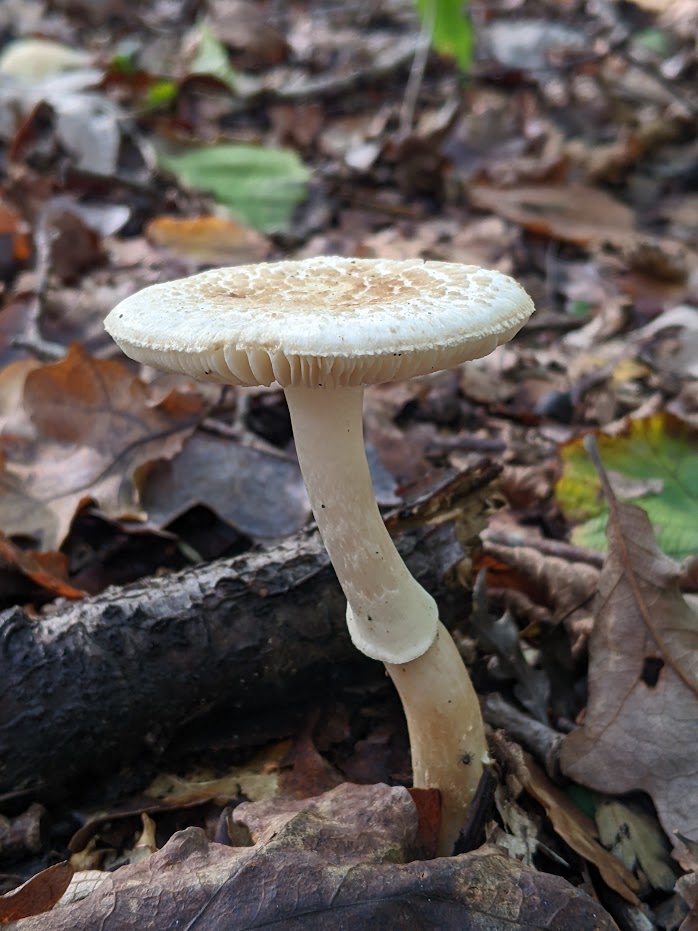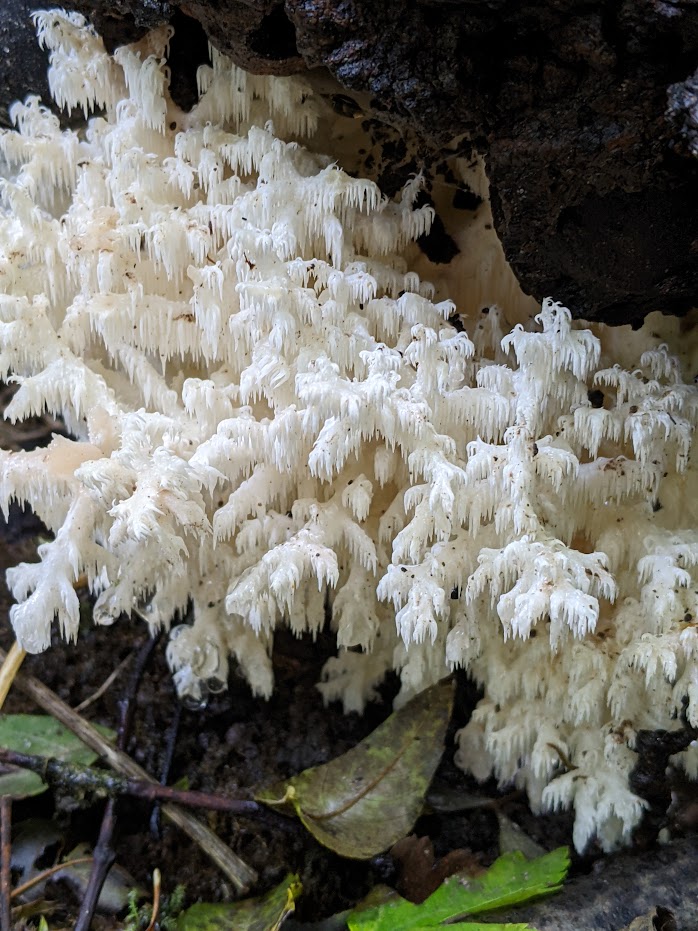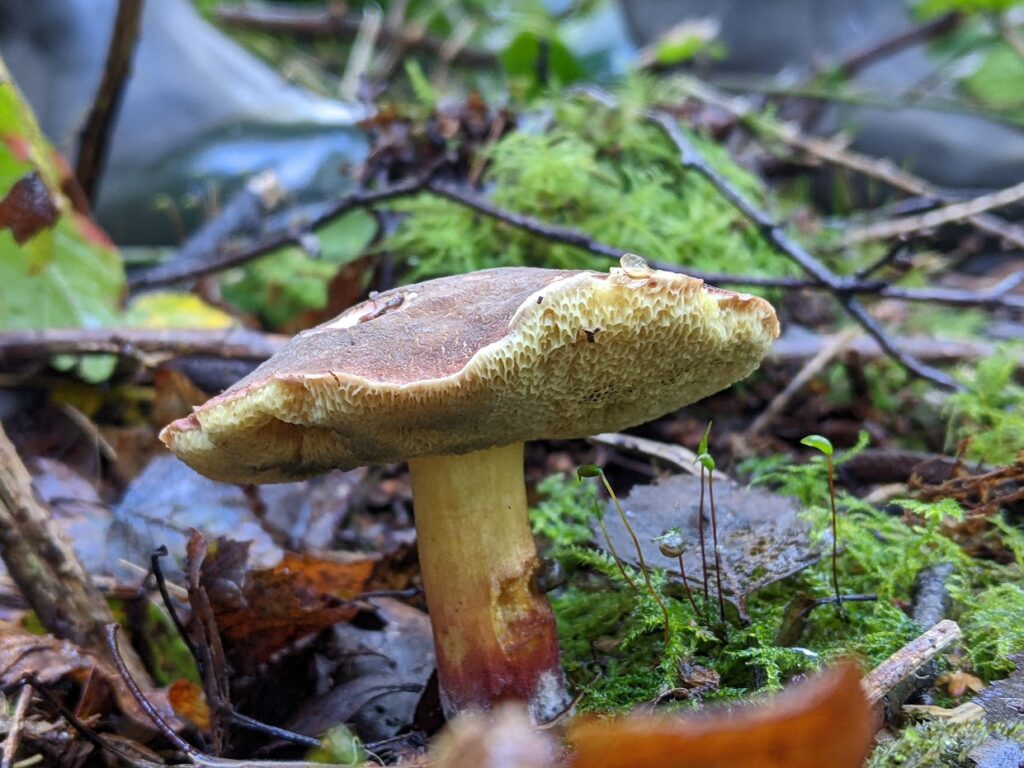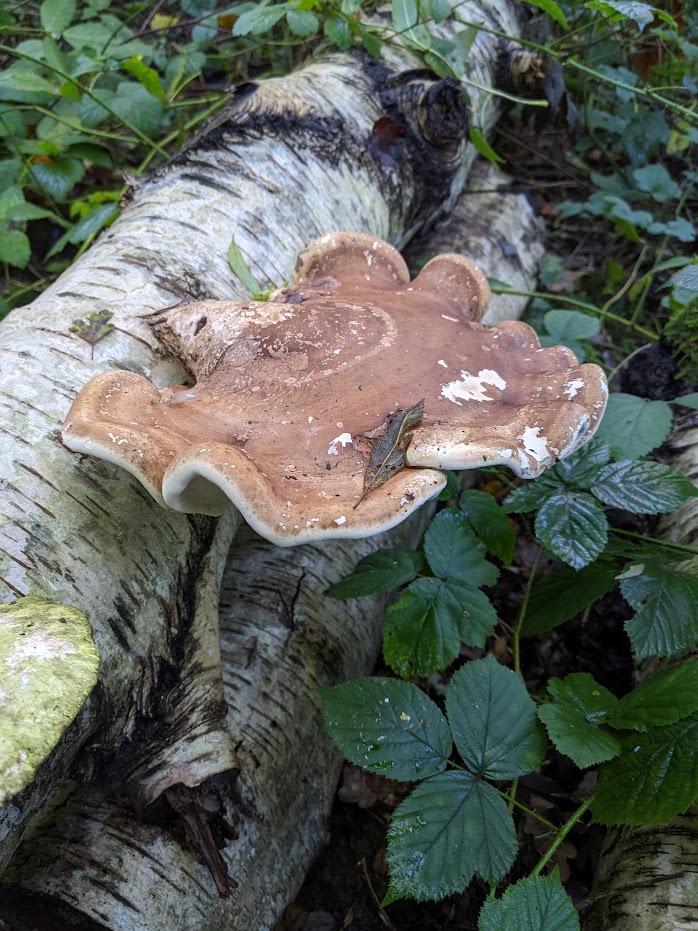The importance of fungi
Guest blog by Rich-Fenn-Griffin, Loughborough University’s Assistant Gardens Manager. October, 2023.
On Sunday 22nd October 2023, the Gardens team welcomed Leicestershire Fungi Group to survey Holywell Wood. The site is believed to have been continuously wooded for over a thousand years and as such the ecological relationships within the wood are both very old and complex. Perhaps the single most consistent part of the wood’s history (since the vast majority of the trees are no older than a century) is the soil and its inhabitants. The soil is the home to lots of different fungi that perform many essential functions in the woodland.

Many fungi are involved in breaking down dead material and releasing the nutrients back into the soil to be re-used by plants. Others are aggressive and will attack and kill unhealthy trees. Others work with trees forming special relationships to help them take up nutrients and water. The fungal body that you see at this time of the year is the fungus’s reproductive parts. The business end of the fungus isn’t easily visible but if you scrat around in the leaf litter you might see lots of tiny white fibres – these are the feeding ends of the fungi.
Fungi are incredibly diverse (about 15 000 species in the UK) and this is because of the many different conditions they work within. Some prefer leaf litter that’s damp whilst others like damp rotting wood on the forest floor. Others prefer drier deadwood in the canopy. Others still, like damper deadwood that’s hung up in a living tree. The preference list goes on and that’s just for woodlands!

Places like Holywell Wood have a much higher than average biodiversity partly because their fungi species are so diverse, and the place has been continuously used as woodland. This habitat consistently meets lots of different fungal niches and so species have found their requirements over the last thousand odd years. So, when you look round at all the deadwood – on the ground, hanging in the air and propped up against trees – is deadwood quite the right term when there’s so much life!

If you want to help fungi, firstly, please don’t pick them from the wild unless the species is very common. Many species are declining and becoming rarer as their habitats disappear. Secondly, be untidy and consistently untidy in the same spot. Create a log pile. Bury part in soil. Then don’t disturb it. As it becomes colonised add to the pile. Try to add to the log pile with the same tree species. Many fungi are very specialist and although generalists are likely to establish on your pile, if you get a rarity, it will want the same conditions replicated again and again. Thirdly, stick up for fungi in conversations about wildlife, climate change and the importance of biodiversity. They are truly the unsung heroes, recycling nutrients and helping soils remain healthy and sequester carbon.




This article is in support of the United Nations Sustainable Development Goal 15: Life on Land. To read more click here.
Sustainably Speaking
Loughborough University Sustainability Blog